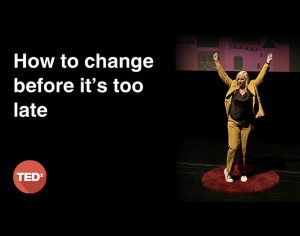Diversity and Inclusivity is at the forefront of thought. The world is seemingly unfolding into something more representative for diversity, although there is much work still to be done. Recently, news washed over the UK of Jake Daniels, the first actively playing footballer to come out as gay, taking immense courage and bravery. While this is a huge step forward in modern football, the STEM sector would benefit greatly from more diverse role models and representatives.
The term in industry, ‘Diversity and Inclusivity’, is a relatively new phenomena with roots in recent societal events, such as the death of George Floyd. It is the concept of blanket wide representation that disregards human bias through recent developments in social science. In practice, it levels the playing field for all, regardless of race, gender, sexual orientation or demographic background and is inclusive of the traditionally marginalised and represented.
The character types of people working in STEM is typically that of an introvert, concentrating on accuracy and high standards. Whilst this marries up to the requirements of many jobs within the sectors that encompass STEM, it often hinders when looking at public interest and engagement in media. This lack of exposure results in an almost self-fulfilling prophecy of public disengagement, allowing this cycle to continue.
STEM needs this engagement with the public to develop its workforce into something that reflects our current desires around diversity in society. For example, a study by the All Party Parliamentary Group (APPG) investigated diversity and representation in the STEM (including health) workforce as it stood in 2019. The key findings included that out of a workforce of 32.8 million people, 5.9 million (18%) worked in STEM occupations. This is a large proportion of the workforce and as such deserves better representation and exposure.
The report offered data on the makeup of the workforce. It stated that out of this workplace population, 65 percent are white men. Another stated that gay men are 12 percent less likely to have obtained a degree in STEM related disciplines. Other statistics include that within the UKs top tech firms, 70 percent of boards are absent of a BIPOC member and that on an educational level, just 19 percent of all engineering students are female. As a Civil Engineering graduate, the last certainly reflects my experience.
It is clear why diversity is important. Homogenous teams are consistently outperformed by diverse teams, showing why and how it is critical to success. A diverse team also offers incites throughout STEM that would be negated by a predominantly white, male one.
A 2015 McKinsey report on 366 companies found that those in the top quartile for ethnic and racial diversity in management were 35% more likely to have financial returns above their industry mean. Those in the top quartile for gender diversity were 15% more likely to have returns above the industry mean.
So, what to do? In my opinion, it starts at education, recruitment and public awareness. It is new territory too, with historic biases in the workplace offering little to no role models. Sourcing what may be forgotten elements of industry professionals and telling their unknown stories could be a way to evolve this too. The organisation, Tomorrow’s Engineers has ambitions to inform young people and grow diversity within STEM. We need to do more though, and striving to make STEM a more diverse and inclusive space can only be for the better. We need media engagement to showcase the amazing feats humans have achieved within science, technology, engineering and mathematics.
STEM is an incredibly exciting space, offering unique human experiences through collaboration and legacy in human innovation. This has never been more crucial to the success of humanity, with the ever evolving climate and ecological crisis this world is now seeing. STEM will be called on to manage this crisis and we will need the best possible team supporting these efforts. The best means diversity.
Share via:


















































